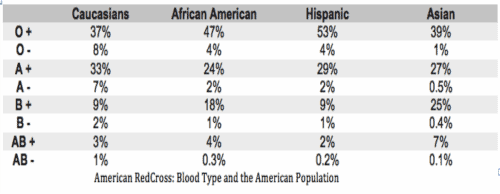

Screening tests are also performed for evidence of donor infection with hepatitis viruses B and C, human immunodeficiency viruses (HIV) 1 and 2, human T-lymphotropic viruses (HTLV) I and II, syphilis and West Nile Virus. Q: What happens to my blood after donating?Ī: After blood is drawn, it is tested for ABO group (blood type) and Rh type (positive or negative) as well as for any unexpected red blood cell antibodies that may cause problems in the recipient. Most donors can resume normal aerobic activities 24 hours after donation. Aerobic activity should be limited for the remainder of the day of donation. Q: How soon after donating can I practice sports?Ī: Avoid strenuous activities such as lifting, pushing, or picking up heavy objects for at least 4 to 5 hours after giving blood. Q: Can I donate during my menstrual period? After donating, drink extra fluids for the next 24 hours to help the body replenish its fluids. It is important to eat well prior to donation to lessen chances of post donation issues.

Whole blood can be donated every 56 days, platelets every 7 days and plasma every 4 weeks (maximum of 24 times a year).Ī: Most people feel great when the donation is complete. This is why different blood components can be donated at different frequency levels. Red cells need about 4-5 weeks for complete replacement. Q: How long will it take to replenish the blood?īlood volume or plasma is replaced within 24 hours. Blood makes up on average 7% of your total body weight. The average adult has 10 pints of blood in their body. Apheresis donations also take about a pint ofįluid both weigh approximately one pound. If you are concerned about this at time of donation please speak with your phlebotomist.Ī: Whole blood donations are approximately one pint. List of countries outside United States and Canada you have visited since 1980Ī: There is a little sting when the needle is inserted, but there should be no pain.List of medications currently being taken.For apheresis (platelet) collections the entire process is about two hours.Ī: When you come to donate, be sure and bring the following items: For whole blood the the actual blood collection takes 5 to 7 minutes. Your pulse, blood pressure and temperature are checked.Ī: The donation process includes registration, a brief medical screening, the blood collection, and time for refreshments in the canteen. A medical history is taken and a drop of blood is analyzed for red blood cell level. If you experience these, contact the CSL Plasma center.Q: What happens first when you come to donate?Ī: You will be asked to provide some basic information such as your name, address, age, and social security number, in addition to positive identification. Signs of infection include pain, swelling, or feeling of warmth at the site of the needle insertion. Donating plasma comes with a slight risk of infection. If you’re uncomfortable, you can speak with a clinician. Bruising may occur at the site of the needle insertion, and you could experience some discomfort during the donation process. If you experience dehydration or electrolyte imbalances, you may also experience tiredness after donating plasma. Donating plasma may cause mild electrolyte imbalances because plasma contains a lot of salts, vitamins, and minerals (electrolytes) that help your body’s functions. Because plasma contains water, removing it may cause donors to experience mild dehydration after donation. Short-term plasma donation side effects include: For healthy adults who meet the donation eligibility requirements, donating plasma is generally a safe medical procedure, however you may face mild immediate side effects.


 0 kommentar(er)
0 kommentar(er)
